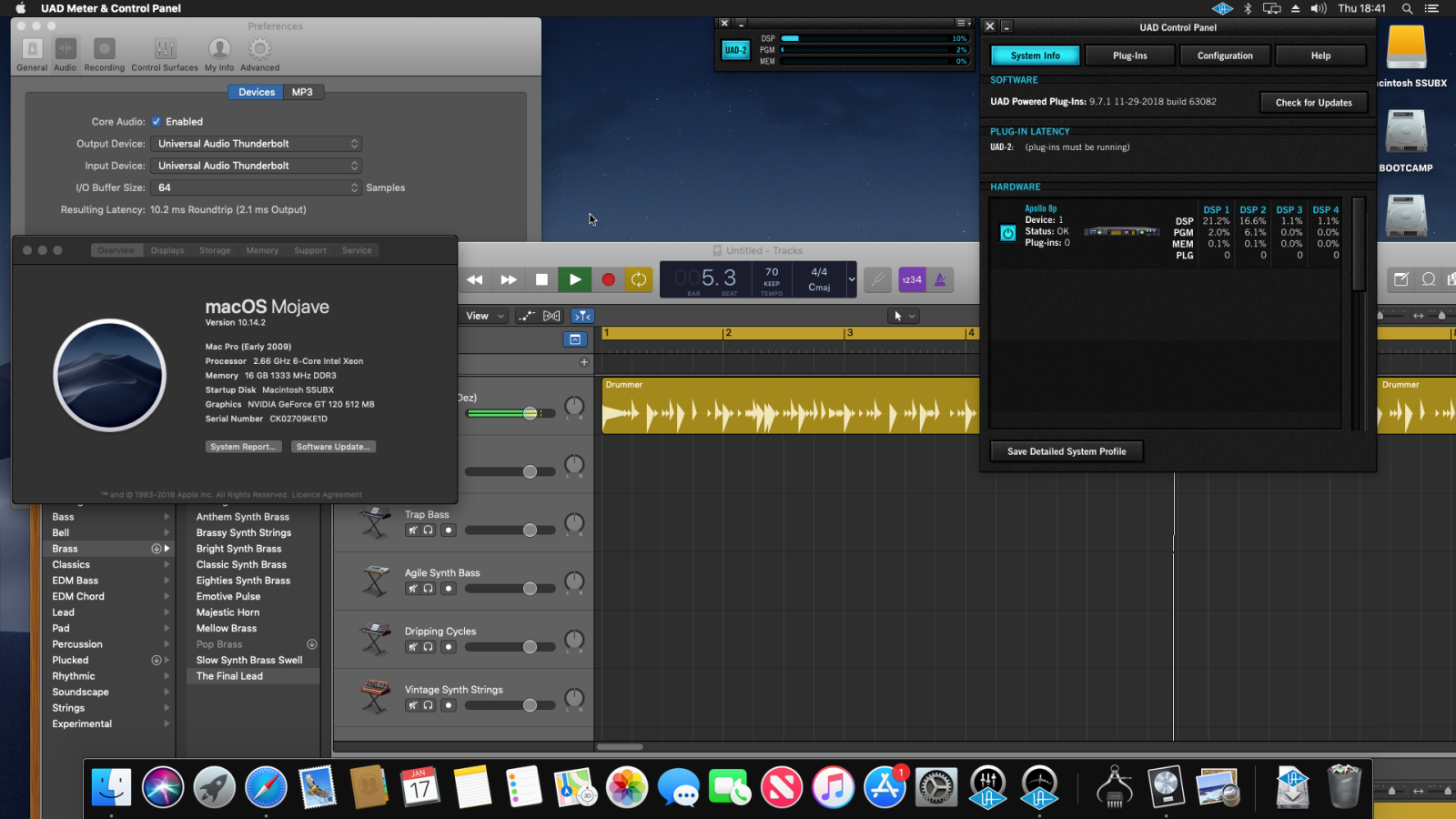I'll just leave this here for you to all digest.
Video to follow outlining method. Never thought the day would come...

Video to follow outlining method. Never thought the day would come...


All this effort for TB in Mojave and using a non-Metal GT120 for GPU?
Lets not rip it to pieces yet, its a test rig, the GT120 will give native boot screens without messing about on newer cards, this is a test rig then I'l move to a newer metal supported card
I'll just leave this here for you to all digest.
Video to follow outlining method. Never thought the day would come...

Had one of these in high school:This is great news. I love my mac pro even though I don't use it much anymore. I would love more upgrades to keep it relevant. My mac pro feels like a classic American muscle car. It's outdated but still a classic...
Except the muscle cars have skyrocketed in value while the cMP has tanked. Maybe one day...Had one of these in high school:
5 litre 290 HP engine (just under 1 HP per cubic inch). Gas mileage sucked, and the rear tires went bald very quickly.
Now driving a new Escape with a 2 litre 240 HP turbocharged engine (just under 2 HP per cubic inch). Highway mileage is 30+ miles per gallon (7.5 Liters per 100 km).
Seems to be roughly as fast as the Boss 302, but spends much less time in the gas stations.
Yes, the cheese grater is like a classic American muscle car.
so cool, you are saving a lot of musicians' worldI'll just leave this here for you to all digest.
Video to follow outlining method. Never thought the day would come...

Anxious to see the video; wondering if you had to boot into Windows first...so cool, you are saving a lot of musicians' world
Except the muscle cars have skyrocketed in value while the cMP has tanked. Maybe one day...
Had one of these in high school:
5 litre 290 HP engine (just under 1 HP per cubic inch). Gas mileage sucked, and the rear tires went bald very quickly.
Now driving a new Escape with a 2 litre 240 HP turbocharged engine (just under 2 HP per cubic inch). Highway mileage is 30+ miles per gallon (7.5 Liters per 100 km).
Seems to be roughly as fast as the Boss 302, but spends much less time in the gas stations.
Yes, the cheese grater is like a classic American muscle car.
TB3 is 4x PCIe 3.0. Potentially, undergroundcub's method could convert 16x PCIe 2.0 to 2 TB3 ports. You could attach an NVMe SSD to one of the TB3 ports, getting the full 3000MB/s+ it's capable of, as well as connect the second port to a raid array, capture card etc.
At best it’s about 2800MB/s after CPU overhead on that 16x slot, only when copying very large files from m2 drive to m2 drive.
PCIe 2.0 x16 is supposed to be 8GB/s. Obviously, overheads reduce that a bit. The 3000MB/s I mentioned was for the SSD - the TB3 port should give about 4GB/s, minus overheads.
Sure, this is a bit academic, and only applies to specific types of transfers etc. In practice, the MP’s 4x slots would still be useful for many things, though - essentially acting as TB2 ports.
This topic has been discussed in great length in this thread: testing TB3 AIC with MP 5,1.
Unless OP has come up with a revolutionary new method...this is just more of the same.
perhaps someone will be nice enough to share their accomplishments in an organized fashion. that thread is hard to follow to say the least on what functions are working and what mods, etc, were required or optional. anyone familiar with this forum is familiar with the many WIKI posts and detailed guides. No one has done that for Thunderbolt yet so myself and I am sure many others are looking forward to something that is more organized and has a logical sequence rather than 7 pages of scattered info
Ignore theoretical maximum of the 2.0 x16 interface. The host Thunderbolt card negotiates a x4 connection regardless of 2.0 or 3.0, if you can even get it to work in the first place.
Soooo there is no required workaround due to the lack of the Thunderbolt header on the cMP logic board? You simply just don't use that cable at all? I saw the posts about making a jumper connection, That specifically is one of the things I haven't wrapped my head around yet.
I am not even as concerned about it working in macOS. I could run my audio software and hardware on Windows also. The only thing I would be interested in using thunderbolt for is for connecting an audio interface. I don't have a need for 4k+ screens and the other features this card has. I just didn't understand how this card works with the lack of a thunderbolt header connection

